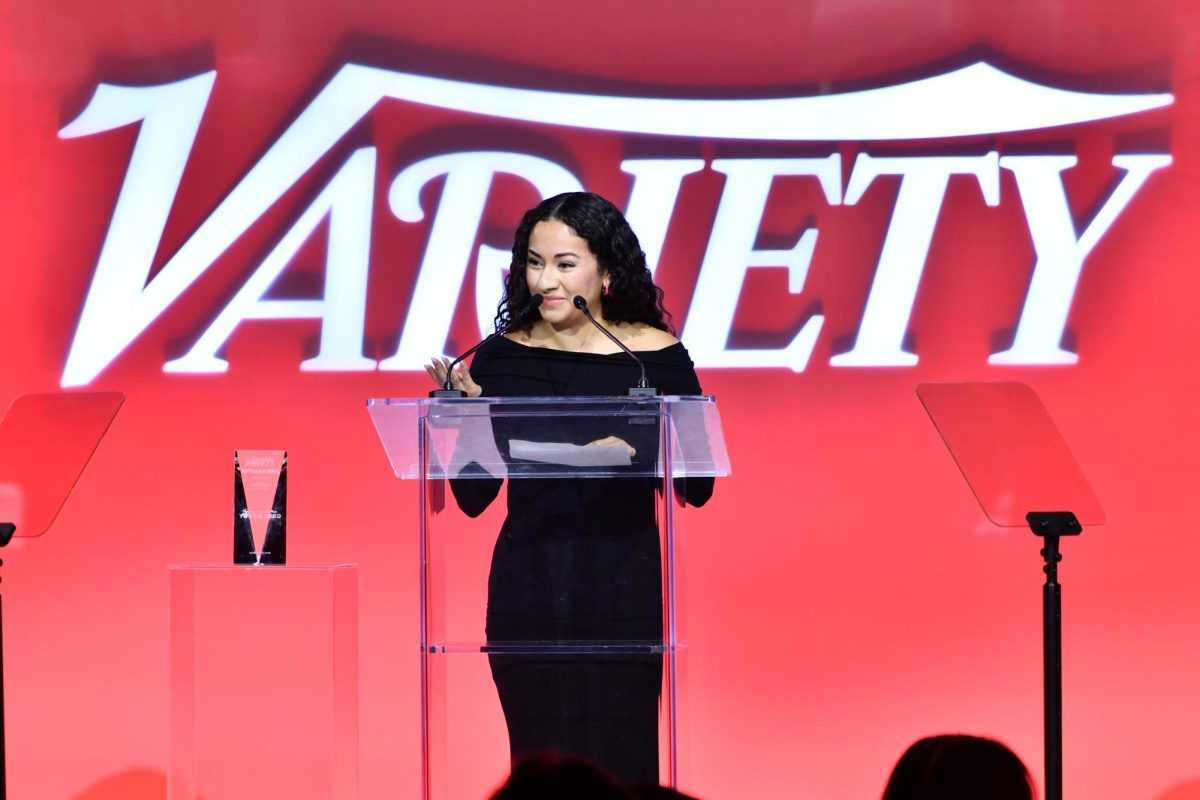CSUN faculty have been offering unique ways to use different technologies to help enhance students’ learning.
This year’s CSUN eLearning displayed several demonstrations on how faculty are using technology to help students get an advantage in the classroom or before hitting the field.
Sally Spencer, director of CSUN simulation services and professor of special education, offers the simulation Bridging the Gap Between Course and Career to help student enhance their field experience with either job interviews, social work, marriage and therapy or other teaching programs on campus.
“We spent a lot of time creating a detailed scenario that allows [students] to come in and basically particle interacting with a client just like they were in a therapy secession or social work consoling session,” Spencer said.
To begin using the simulation, the student would go into a room, usually in a group, and they sit in a semicircle facing a large TV. The simulation would then show an avatar or a group of avatars, which is an A.I. and a real person, for students to take turns sitting in a chair speaking with the avatar that would give responses to anything the student says, said Spencer.
Spencer said after a minute of interacting with the simulation, the student could forget they are not talking to a real person because of how realistic it is. She also believes that the simulation is better than having an actor because the student would be able to pause and the avatar goes away to have a safe conversation with their classmates.
“So the conversation that happens around that is so valuable, and it’s something you just can do any other way,” Spencer said. “It’s better than a classroom role play.”
She is currently working to have the simulation stay on campus by figuring out where they could get the resources they need. She does not know how much longer they will have it unless the university supports the simulation.
Most students get used to it once or twice in their school career through their classes and professors would have to request to use the simulation, said Spencer.
“It’s like the missing pieces between what you do in a classroom and what you do with a real client,” Spencer said.
She added that if it can be industrialized on campus, ultimately students can sign up and pay $30 to come in and practice for half an hour, but at the moment there are no resources available for that.
Anthony Barnes, 28, social worker major, said his experience with the simulation last spring was beneficial for him due to the field experience the simulation introduces and the quick feedback from his professor and classmates. For his simulation, he and his classmates used had to interact with a parent on school grounds.
“I really was into it, unique experience to interact with a somewhat realist,” Barnes . “It’s very cool that CSUN has something like this.”
Social psychology professor Abraham Rutchick said he uses Zoom the program since fall 2016, provided by canvas, to teach his online (60 students) and regular class (250 students) at the same time.
Zoom is like Skype in which it allows the online students to see the lectures live, real-time online session, and ask questions to the professor through a teacher’s assailant in the back of the classroom, said Rutchick.
Rutchick said he uses Zoom because he felt like he was good at teaching an online course but not as well as teaching a regular classroom. He also noted that as the campus’ student population is growing there is more demand for social psychology class.
“To be good at it you need to plan staff in advances and know where you are going and design all these things before you start,” Rutchick said. “I like being in a classroom and figuring it out as I go. It’s more my style, but online offers a lot of advantages to many students.”
He said there is no difference in online student participating more than students in the classroom, but he can imagine that students that are shy participating more.
“The [online] students are participating in class like they are there,” Rutchick said. “It should feel like they are in the room.”
Zoom also allows live streams to be recorded to be seen in another time and provide, more importantly, two-way communication, said Rutchick.
In the future, Rutchick plans to increase the online student size to 100 and have a focus group to see the feedback students have using Zoom.





